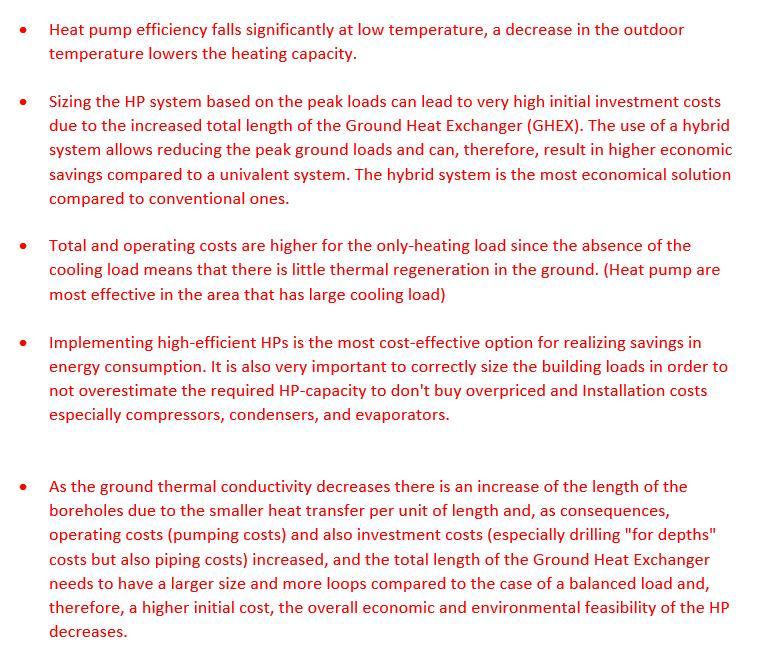Answered step by step
Verified Expert Solution
Question
1 Approved Answer
1. Assess the limiting factors that impacts the economics of heat pumps. For instance, consider the following aspects: Low temperature medium effect Supplementary heating


1. Assess the limiting factors that impacts the economics of heat pumps. For instance, consider the following aspects: Low temperature medium effect Supplementary heating system or innovative solutions Heat pump in areas that have larger cooling load (geographical location) Installation costs (i.e., pipes, elbow, compressor, condenser, evaporators and valves) Geothermal network configuration (i.e., length, loops number and depth) Heat pump efficiency falls significantly at low temperature, a decrease in the outdoor temperature lowers the heating capacity. Sizing the HP system based on the peak loads can lead to very high initial investment costs due to the increased total length of the Ground Heat Exchanger (GHEX). The use of a hybrid system allows reducing the peak ground loads and can, therefore, result in higher economic savings compared to a univalent system. The hybrid system is the most economical solution compared to conventional ones. Total and operating costs are higher for the only-heating load since the absence of the cooling load means that there is little thermal regeneration in the ground. (Heat pump are most effective in the area that has large cooling load) Implementing high-efficient HPs is the most cost-effective option for realizing savings in energy consumption. It is also very important to correctly size the building loads in order to not overestimate the required HP-capacity to don't buy overpriced and Installation costs especially compressors, condensers, and evaporators. As the ground thermal conductivity decreases there is an increase of the length of the boreholes due to the smaller heat transfer per unit of length and, as consequences, operating costs (pumping costs) and also investment costs (especially drilling "for depths" costs but also piping costs) increased, and the total length of the Ground Heat Exchanger needs to have a larger size and more loops compared to the case of a balanced load and, therefore, a higher initial cost, the overall economic and environmental feasibility of the HP decreases.
Step by Step Solution
There are 3 Steps involved in it
Step: 1

Get Instant Access to Expert-Tailored Solutions
See step-by-step solutions with expert insights and AI powered tools for academic success
Step: 2

Step: 3

Ace Your Homework with AI
Get the answers you need in no time with our AI-driven, step-by-step assistance
Get Started


